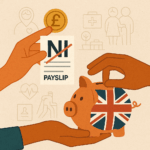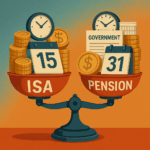Over the past year, households around the world have faced a relentless wave of energy price hikes, pushing many to rethink how they consume electricity and gas. These surges have often stemmed from geopolitical tensions, disruptions in supply chains, and broader economic instability. For many, the concept of a price cap — once a reassuring boundary against market chaos — has become a moving target. Governments that once kept utility costs relatively stable have been forced to raise these caps, leaving consumers scrambling to manage escalating bills.
While the headlines often focus on price tags and political decisions, the real impact is felt at home. Whether it’s parents juggling a monthly budget, renters facing utility spikes, or small business owners reworking expenses, everyone is navigating the effects of rising energy ceilings. Fortunately, there’s more power in our hands than we might think. With a blend of awareness, tech-savvy choices, and behavioral shifts, it’s possible not only to reduce bills but to cultivate a more sustainable lifestyle. Let’s unpack what’s behind the new price caps — and, more importantly, what we can actually do about them.
The new ceiling: why energy price caps are climbing

The energy price cap — designed as a regulatory tool to shield consumers from excessive rates — is no longer the solid defense it once was. Its recent increase in many countries is largely a response to global supply challenges and a volatile fossil fuel market. Following the war in Ukraine and subsequent sanctions, Europe saw major disruptions in gas imports, especially from Russia. This scarcity sent wholesale prices soaring. Simultaneously, global inflation and a spike in post-pandemic energy demand added more pressure to the system. Governments, in an attempt to prevent supplier bankruptcies and ensure a steady energy flow, lifted the caps to balance both provider sustainability and consumer access.
But this adjustment isn’t without fallout. Raising the price ceiling means that providers can charge more, even if wholesale prices fluctuate. While it protects companies from insolvency during uncertain times, it exposes consumers to heightened bills. This is especially concerning for low- and middle-income families, where utilities account for a larger share of household expenses. Moreover, many caps are reviewed quarterly or biannually, which means future increases remain a very real possibility. Without targeted subsidies or broader structural reforms, a raised cap could become a gateway to prolonged financial strain.
Turning down the cost: practical ways to reduce your energy bill
When price caps rise, adaptation becomes essential — and small changes can produce surprising results. Start by identifying the energy-intensive culprits in your home. Heating and cooling typically account for the lion’s share of usage. Investing in better insulation, even something as simple as sealing window gaps or using thermal curtains, can reduce heat loss dramatically. Swapping out old incandescent bulbs for LEDs may seem basic, but over time it shaves noticeable dollars off the bill. Even unplugging devices when not in use — often called combating “phantom load” — can cut down electricity waste by up to 10%.
Technology also plays a pivotal role. Smart thermostats, for instance, can learn your schedule and optimize heating or cooling accordingly. Some even offer energy reports, showing patterns and suggesting improvements. Similarly, energy monitors can track appliance usage in real-time, empowering users to make cost-effective choices. On the appliance front, choosing energy-efficient models (look for Energy Star or equivalent labels) when it’s time to upgrade can yield long-term savings. And don’t underestimate behavioral shifts: washing clothes in cold water, running dishwashers at full loads, and air-drying laundry when possible are all simple yet effective strategies.
Government programs can also help, especially during cap hikes. Many regions offer subsidies, rebates, or zero-interest loans for energy efficiency upgrades. Others provide discounts or assistance to vulnerable populations. It’s worth checking local initiatives or utility provider programs — some even offer free home energy audits, which can identify efficiency gaps and recommend targeted solutions. Empowerment, in this case, begins with information.
The mindset shift: long-term resilience over short-term panic
Beyond gadgets and quick fixes, adapting to higher energy costs requires a deeper, mindset-level transformation. It’s tempting to view price hikes as a temporary nuisance — something to endure until things “go back to normal.” But given the evolving nature of the global energy market, volatility might be the new norm. Embracing this reality means moving away from reactive, month-to-month coping and toward long-term resilience. Think of it as building your own energy ecosystem — one that prioritizes sustainability, self-awareness, and conscious consumption.
This shift begins with education. Understanding your energy bill — what kWh means, peak usage hours, or how variable rates work — can be incredibly empowering. From there, setting realistic goals (like reducing usage by 15% over the year) turns abstract stress into measurable progress. In communities, sharing insights and forming support networks — whether it’s neighborhood swaps of efficiency tips or group investments in shared solar — amplifies impact. Even adopting energy-saving challenges at workplaces or schools builds a culture of proactive adaptation.
Importantly, the move toward resilience isn’t just about reducing bills; it’s about reclaiming a sense of control. In times of uncertainty, that control can translate into peace of mind — knowing that your lifestyle is future-ready, that your choices are aligned with both economic and environmental responsibility. Rising caps may be beyond our influence, but how we respond to them isn’t.
Finding strength in adaptation: a future-proof approach to rising energy costs
The increase in energy price caps is a wake-up call — not just about market dynamics, but about our relationship with consumption itself. While the initial instinct may be to worry or scale back everything, the more powerful approach is to plan, adapt, and invest in smarter habits. Energy doesn’t have to be a source of stress. With the right knowledge, tools, and mindset, we can navigate this moment not as victims of change, but as architects of a more resilient, informed future.
More than a financial response, adapting to price surges can spark broader lifestyle shifts — ones that align with environmental awareness and self-sufficiency. As we adopt more intentional behaviors, invest in efficient technologies, and share knowledge across communities, we pave the way for long-term benefits that go beyond bills. The next time energy costs rise, those who’ve taken proactive steps won’t just survive the spike — they’ll thrive through it. In this new energy era, the smartest power is the one we choose to harness wisely.


